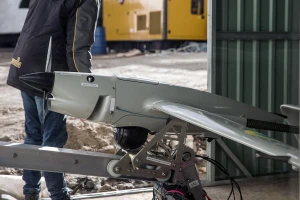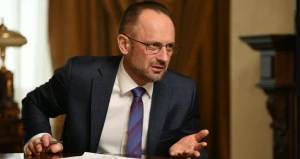
Kakhovka HPP destruction anniversary: consequences, reservoir’s current state
June 6 marks one year since the Russian military committed a terrorist attack and real ecocide on the Ukrainian territory, destroying the Kakhovka hydroelectric power plant (HPP)
At about 3 a.m. on June 6, 2023, the Russian military blew up the structures of the Kakhovka hydroelectric power plant in the Kherson region. Authorities and volunteers from all over Ukraine began to urgently evacuate people from the nearby areas.
Leaders of many countries have condemned the destruction of the Kakhovka hydroelectric power plant, calling it Russia's another war crime. It is important that the international community has responded and provided assistance to minimize the humanitarian and environmental consequences of this act of aggression. Support and solidarity with Ukraine in this situation is crucial for stability and saving lives.
At the same time, the explosion of the Kakhovka hydroelectric power plant resulted in numerous human casualties, serious environmental consequences and affected the safety of the Zaporizhzhia nuclear power plant. The Ukrainian side is convinced that these actions by Russia were intended to create chaos and were aimed at delaying the Ukrainian Defense Forces.
Kakhovka hydroelectric power plant destruction
Nova Kakhovka and Kakhovka HPP have been under occupation by the Russian military since the beginning of the full-scale invasion. Along with the plant, all the specialists working at the facility were taken hostage. Almost from the very beginning, the invaders interfered with the operation of the HPP, in particular, they blew up the North Crimean Canal to supply water to the Crimean peninsula, deployed their troops on the territory of the facility and set up command posts.
In general, due to the actions of the Russian army, normal operation and maintenance of the important hydrological structure ceased. In May 2022, a briefing was held at the Ukraine Media Center, where Brigadier General Oleksii Hromov, Deputy Chief of the Main Operational Department of the Ukrainian General Staff, spoke in more detail about the situation at important energy facilities. "At present, the control center of the Southern Military District is deployed at Kakhovka station. At the same time, the Russians are not making any efforts to maintain these facilities in good condition, which could lead to an environmental disaster. Currently, two hydraulic units at the Kakhovka power plant are out of service, which the occupiers do not allow to be repaired. This has already led to the flooding of Kakhovka and threatens the nearest villages," explained Hromov.
Later, even more disturbing news began to come from Kakhovka HPP. Thanks to data from the Defence Intelligence of Ukraine, it became known that the station had been mined since April 2022. The message makes it clear that the Russian forces are preparing a terrorist attack and it is only a matter of time before it happens. "During the current week, additional mining of the gateways and supports of the Kakhovka HPP was carried out. There are 2 military tented Kamaz trucks without drivers on the dam. Both trucks are fully loaded with boxes of explosives," explained the intelligence agency.
In addition, the Russian military had already begun to gradually discharge water, which had consequences in the form of flooding the embankments in the nearest settlements.
While striking at the Ukrainian energy system in 2023, the Russians simultaneously tried to increase the level of terror and continued to discharge water from the reservoir. They damaged the plant and opened the hydroelectric power plant's locks, which led to a significant loss of water, and the reservoir level dropped by 1.4 meters. In this way, the Russians tried to cause economic losses and reduce the population's access to clean drinking water.
Even then, the Ukrainian authorities were actively recording all the violations and highlighting them internationally, trying to enlist the help of the international community to avoid a possible catastrophe. In late October, President Volodymyr Zelenskyy appealed to the European Council to deploy an observation mission to the hydroelectric power plant, and he called on the international community to put pressure on Russia to stop its actions that violate the Geneva Convention.
Before retreating from the right bank of the Dnipro River, Russian troops deported Ukrainian citizens under the guise of "evacuation" and threatened them with the explosion of a hydroelectric power plant.
At 2:50 a.m. on June 6, explosions occurred at the Kakhovka hydroelectric power plant. The power plant's engine room was blown up from the inside and completely destroyed. According to Ukrhydroenergo, the plant could not be restored.
The Russian side first denied that the hydroelectric power plant had been blown up, and then they began to blame Ukraine for the tragedy. The SBU opened a criminal case against the Russian military under two articles of the Criminal Code over the destruction:
- Article 438 - violation of the laws and customs of war;
- Article 441 - ecocide.
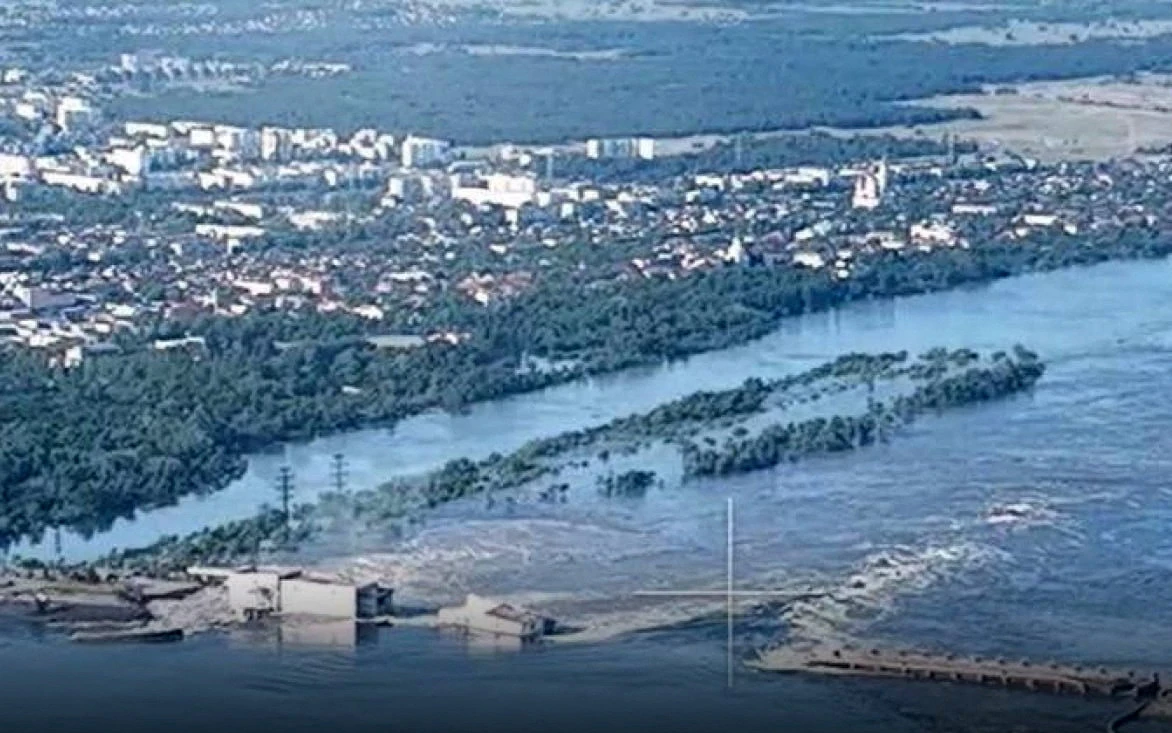
Photo: Reuters
Impact of the Kakhovka HPP destruction on people and nature
In the Kherson region, units of Ukraine's National Police and the State Emergency Service were put on alert to inform and evacuate people from possible flood zones on the right bank of the Dnipro River. These zones include the villages of Mykolaivka, Olhivka, Ivanivka, Prydniprovske and others, as well as part of Kherson - Korabel Island. Oleksandr Prokudin, the head of Kherson Regional Military Administration, announced the start of evacuation of residents from the dangerous areas. He noted that the water will reach a critical level in five hours.
About 80 settlements were in the danger zone of potential flooding. It was clear that the left bank, which is located lower down, would suffer the most damage. Houses, fields and entire villages were submerged.
The destruction of the Kakhovka hydroelectric power plant in the territories controlled by Ukraine resulted in 33 deaths, 28 injuries, and over 40 missing people. Today it is impossible to accurately assess the consequences on the temporarily occupied territories. This information was provided by the UN Independent International Commission of Inquiry, which is investigating violations in Ukraine, according to the Human Rights Center.
According to the international commission, the flooding caused significant damage, including the destruction and damage to numerous residential and non-residential buildings and other structures. It also hampered access to basic human needs such as drinking water and food. Local residents were forced to evacuate their homes and look for safe places to live.
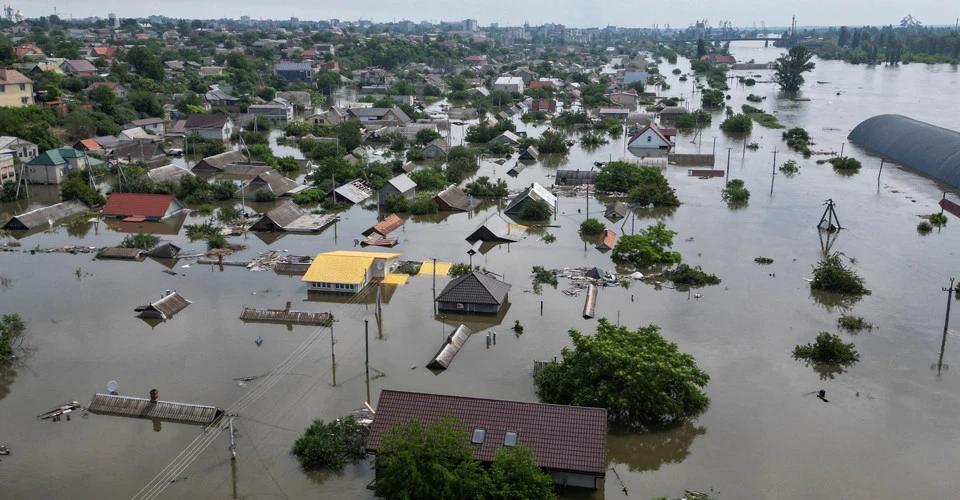
Photo: reuters
An investigation by the Associated Press revealed that the consequences of the destruction of the Kakhovka hydroelectric dam and subsequent flooding were much more widespread than the Russian side reported from the occupied territories. They claimed only 59 deaths. The AP states that in occupied Oleshky, where approximately 16,000 people lived at the time of the tragedy, the Ukrainian military estimates the number of deaths to be at least hundreds.
The destruction of the Kakhovka hydroelectric power plant by the Russian army caused Ukraine losses estimated at almost $14 billion. This information was published on the UN web portal of Ukraine.
"As a result of the explosion of the Kakhovka hydroelectric power plant, 620 square kilometers of territory in four regions were flooded: Kherson, Mykolaiv, Zaporizhzhia and Dnipropetrovsk regions. About 100,000 residents of these regions were affected by the flooding. Power grid, drinking water supplies, infrastructure, the environment, irrigation of agricultural land, cultural and historical monuments have been damaged," the UN reports.
Ruslan Strilets, Minister of Environmental Protection and Natural Resources of Ukraine, added on the United News telethon, "The disaster damaged more than 600,000 hectares of land. In addition to the destruction of some ecosystems and the loss of endemic animal species, there were also consequences in the form of a huge amount of destruction waste. This is thousands of tons of waste that was washed into the Black Sea. This is a large amount of pollution, and the countries that actually border Ukraine on the Black Sea have definitely felt this impact.”
What's happening to the reservoir now?
The main work to eliminate the consequences of the disaster caused by the Russian destruction of the Kakhovka hydroelectric power plant in Kherson region was completed on August 30, 2023.
In July, it was announced that the project to restore the Kakhovka hydroelectric power station would consist of two main stages, according to Vadym Krainyk, Chairman of the Board of Ukrhydroproekt.
"The first stage is the preparatory period. In particular, the design of structures, such as the upper and lower temporary dams, the arrangement of a transport crossing from the right to the left bank, and structures that will allow sanitary passage to the lower reaches. The second is to inspect the structures that have been destroyed, determine which structures can be restored, which need to be dismantled and new ones built, that is, to develop a project for the restoration of the hydroelectric power plant and for the implementation of construction," explains Krainyk and adds, "In addition, they will consider the possibility of merging with the previously planned Kakhovka HPP-2 on the right bank. I think in this case it would be appropriate to combine these two facilities.”
In the same month, Ukraine's Cabinet of Ministers approved a resolution to launch a pilot project to restore the Kakhovka HPP. This project was designed to last two years. The first stage will include the design of engineering structures and the preparation of the necessary infrastructure for restoration. The second stage will begin after the regaining of control over the territory where the HPP is located and will include construction work. The project is coordinated by the Ministry of Economy, while Ukrhydroenergo is the customer. This was announced by Prime Minister Denys Shmyhal.
In an interview with LIGA.net, Oleksandr Prokudin, head of the Kherson Regional State Administration for Nuclear Energy, said that scientists are currently working on the restoration project. "According to preliminary estimates, it will take at least five years to build a new station and EUR 1 to 2 billion," Prokudin said.
Today, there are active discussions about whether to rebuild the Kakhovka hydroelectric power plant. Urbanist Vitalii Selyk notes that discussions about the feasibility of restoration make sense only after the liberation of the left-bank part of Kherson region. At the moment, it is impossible to assess the exact condition of the land and irrigation canals, and therefore, a rational decision can only be made based on a realistic assessment of the situation.
His approach emphasizes the need to balance economic benefits with environmental considerations. This is important because infrastructure projects of this magnitude have long-term implications for the region, both economically and environmentally. Thus, it is important that the restoration is based on balanced, strategic planning that takes into account all aspects of the problem.
"When we liberate the lands of the Left Bank, we have to assess, together with business and European partners (because this concerns not only Ukraine but also food chains around the world), what resources need to be attracted to restore the economy on those lands. We will need to completely rethink this region, calculate different concepts of how to restore it," explains Selyk.
On the other hand, political scientist and economist Taras Zahorodniy emphasizes the importance of restoring the Kakhovka HPP from an economic and strategic point of view. He emphasizes the key role of the hydropower plant in providing reclamation in the southern regions of Ukraine and the operation of industrial enterprises in Zaporizhzhia and Nikopol that produce steel needed for the defense industry. This is an important argument in favor of restoration, as without the hydropower plants, these regions could face serious problems in manufacturing and agriculture.
Zahorodniy also draws attention to the historical context, noting that Soviet infrastructure planning was based on economic efficiency, where a dam served many purposes at once. This allows to understand why the hydroelectric power plant was important not only for energy but also for industrial and agricultural needs.
"In other words, in exchange for the Velykyi Luh (Great Meadow - Ed.), which historians and environmentalists talk about so much, we will kill the industry that we need to produce weapons, and reduce the country's defense capability. And we will turn the territory into a desert, where a million people will have to go abroad because they will have no work," argues Taras Zahorodniy.
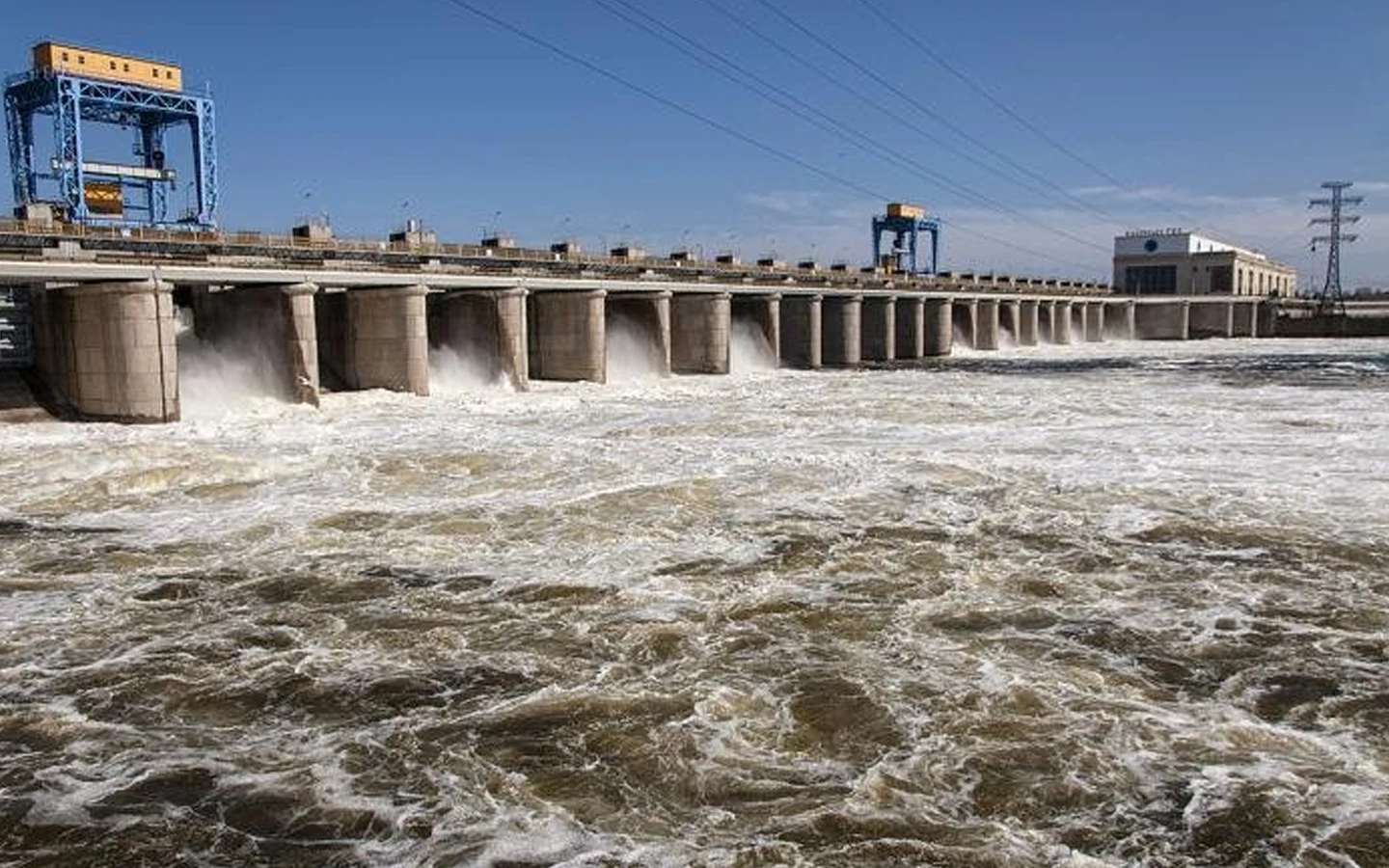
Photo: The Ukrainian Armed Forces' General Staff
It is very difficult to predict how the situation will develop in the future. It is difficult to predict how the ecosystem will recover, but one thing is clear: nature will follow its own path of recovery.
An interesting transformation has taken place on the shores of the former Kakhovka Reservoir in the Dnipro region: almost a year later, shells have covered the soil, and white willow is sprouting from the dry bottom. Ecologist Vadym Maniuk told Suspilne that a dense forest has already formed on the territory of about 150,000 hectares of the former reservoir.
The variety of flora on this site is impressive. In the foreground is a willow tree that reaches a height of 2.5 to 3 meters, as well as water sorrel and western skeleton grass.
"I was still expecting more water, to see the shores of lakes somewhere, some arms. I didn't take into account that the willow had grown very high. It hides if there are any 'windows' with water somewhere. I thought there would still be some open areas. This is incredible. We can say with certainty that there is no such phenomenon anywhere else on the planet," the ecologist said in an interview with Suspilne Dnipro.
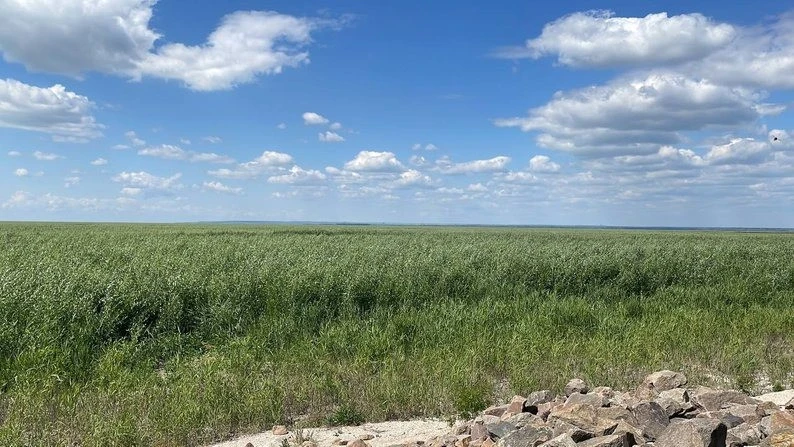
Photo: Suspilne Dnipro
About the Kakhovka HPP
The Kakhovka hydroelectric power plant (HPP) was an important part of Ukraine's energy system. It was the sixth in a cascade of reservoirs on the Dnipro River near the town of Nova Kakhovka in the Kherson region. It had an installed capacity of about 351 MW.
The construction of the plant began in the 1950s, and the first turbine was installed in 1955. Four years later, the construction was fully completed. The reservoir created by the plant had a volume of about 18 cubic kilometers of water and was used for irrigation and water supply.
This construction was an extremely large project that was in line with Soviet ideology and showed the greatness of engineering throughout the USSR. In the mass consciousness, these projects were positioned as a "bright future." About 12,000 specialists took part in the construction of the station, and a lot of equipment was used.
However, the story of the Kakhovka HPP has a dark side. To implement the project, a large area had to be buried under water: about 257,000 hectares of the Dnipro floodplains, thousands of hectares of black soil, and 90 settlements. Unexplored archaeological and historical sites were also submerged. Particularly noteworthy is the flooding of the Velykyi Luh, which was a symbol of Cossack security and freedom. That is why, after decades, numerous archaeological artifacts have been found under the waters of the Kakhovka Reservoir.
The Kakhovka HPP was a key infrastructure facility in Ukraine, part of the unified energy system of Ukraine, which provided electricity to a large part of the country's southern regions. In addition to generating power, Kakhovka HPP performed important functions in regulating the flow of the Dnipro River, providing water supply, irrigation and navigation.
- News









